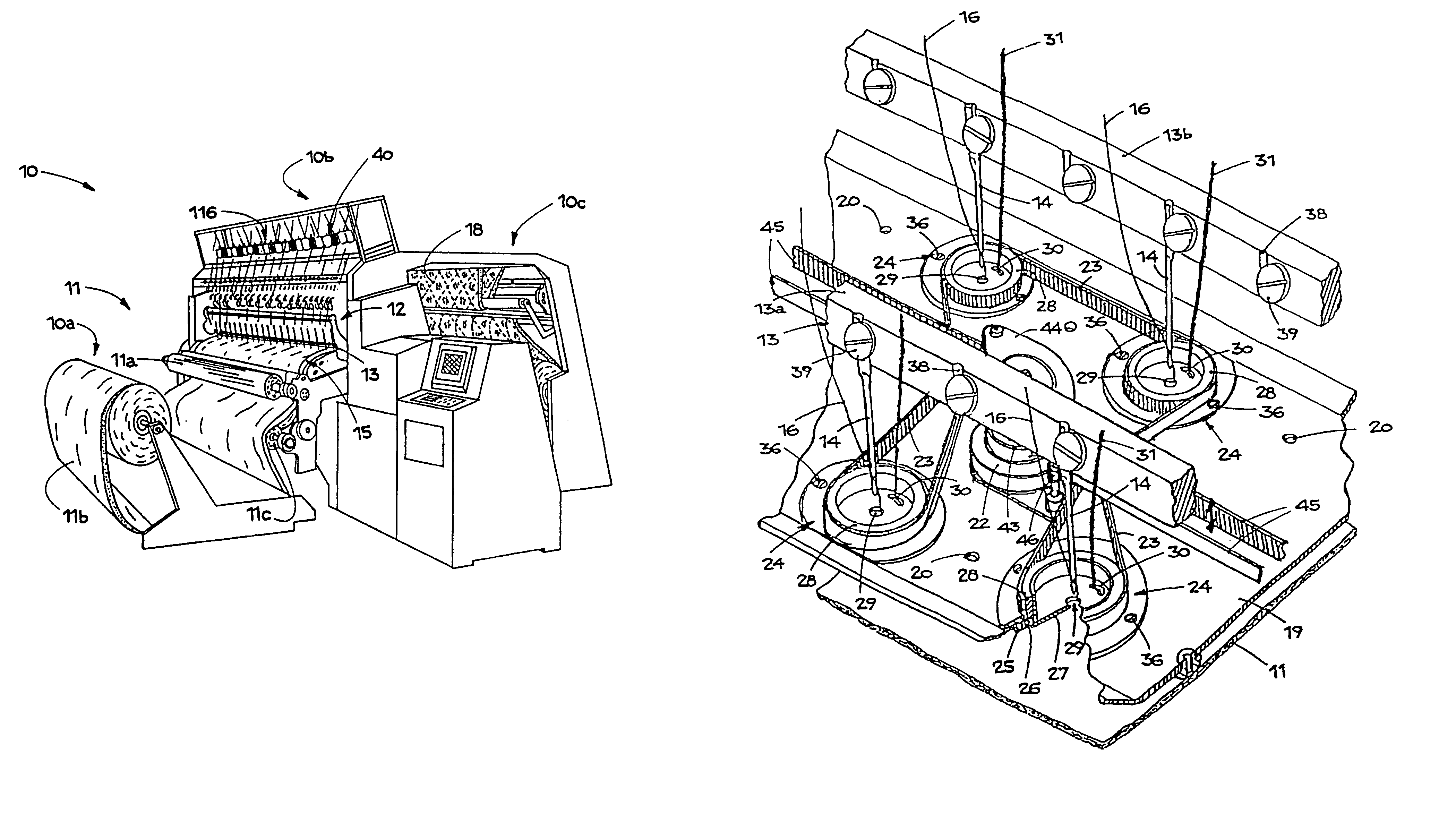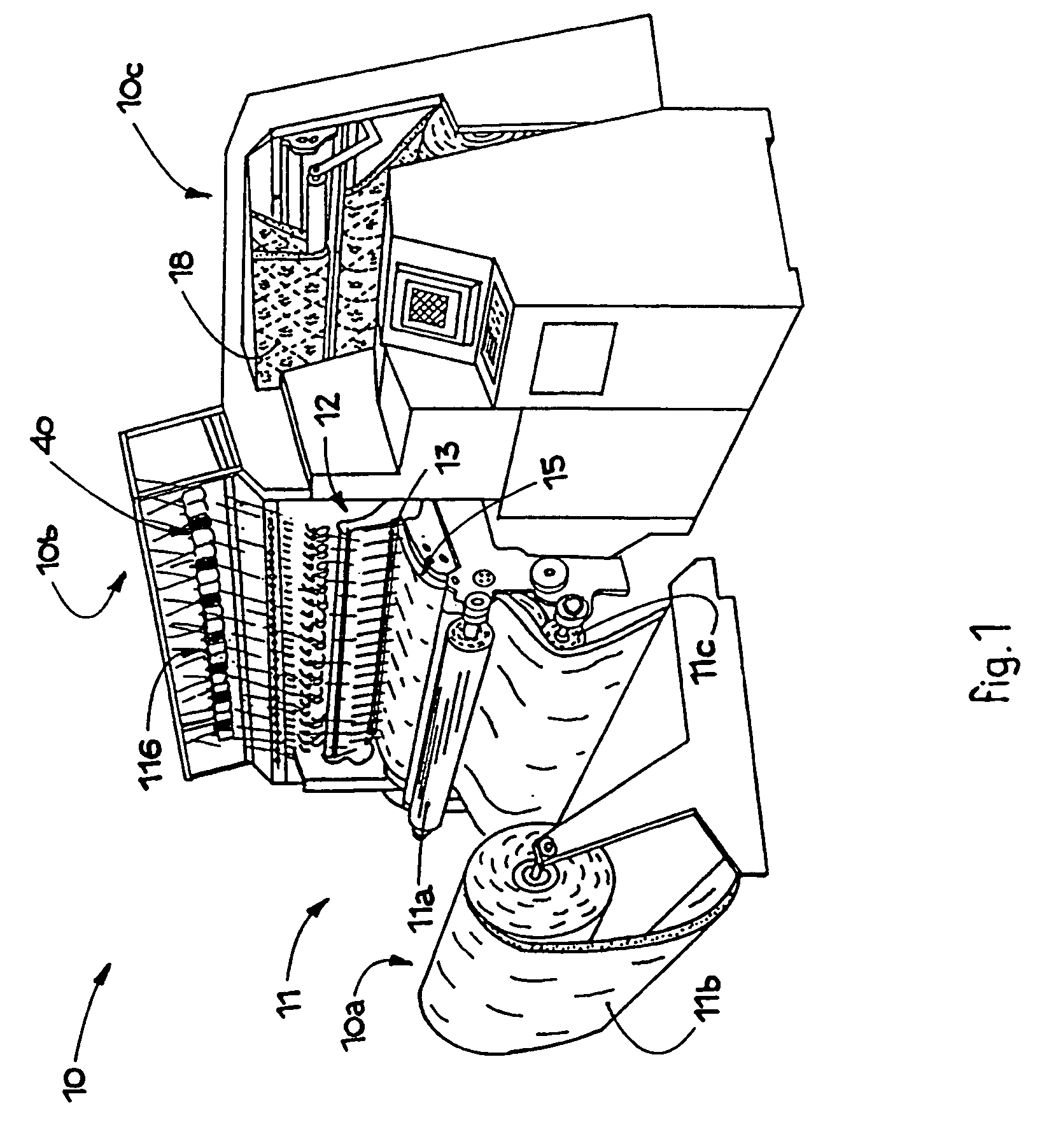Method and device to apply cord thread or ribbons onto fabrics in a quilting machine
a quilting machine and cord thread technology, applied in the direction of embroidering machines, automatic machines, embroidering machines, etc., can solve the problems of limited productivity, discontinuous, and large distance between ornamental designs made by these devices, and achieve thicker and more continuous patterns. , the effect of speed
- Summary
- Abstract
- Description
- Claims
- Application Information
AI Technical Summary
Benefits of technology
Problems solved by technology
Method used
Image
Examples
Embodiment Construction
[0064]FIG. 1 shows an electronically controlled multi-needle quilting machine 10 of a general type which is substantially known. The quilting machine 10 comprises, as its essential parts, an inlet assembly 10a, a sewing assembly 10b and an outlet assembly 10c.
[0065]The inlet assembly 10a is used to feed the textile material 11 which has to be worked. The inlet assembly 10a is managed and controlled by software and is therefore able to move the textile material 11 in any direction whatsoever, to-and-fro or right-left, in order to achieve any type of pattern, even extremely complex ones.
[0066]The sewing assembly 10b comprises upper sewing organs 12 and lower sewing organs 15 of a conventional type.
[0067]The upper sewing organs 12 consist, in this case, of two parallel needle-bearing bars 13, respectively 13a and 13b, on which respective aligned needles 14 are assembled, each co-operating with a respective thread 16, called the needle thread, fed from respective reels 116 arranged in ...
PUM
 Login to View More
Login to View More Abstract
Description
Claims
Application Information
 Login to View More
Login to View More - R&D
- Intellectual Property
- Life Sciences
- Materials
- Tech Scout
- Unparalleled Data Quality
- Higher Quality Content
- 60% Fewer Hallucinations
Browse by: Latest US Patents, China's latest patents, Technical Efficacy Thesaurus, Application Domain, Technology Topic, Popular Technical Reports.
© 2025 PatSnap. All rights reserved.Legal|Privacy policy|Modern Slavery Act Transparency Statement|Sitemap|About US| Contact US: help@patsnap.com



